Ever wondered how to try on clothes without actually wearing them? Or how to choose the perfect shoe size without stepping into the store?
Welcome to the virtual fitting room - the new tech is shaking up retail. It's all about trying clothes on your digital self. You get the perfect fit, style, and color with just a few clicks.
In this article, we will learn how these virtual rooms work, their pros and cons, and how top brands are using them.
In this article
Part 1. What is a Virtual Fitting Room?
A virtual fitting room is a technology that allows customers to visualize what clothing will look like on their bodies. It is the virtual equal of an in-store dressing room. It aims to improve the customers’ shopping experience.
The technology combines image, video, augmented reality, and artificial intelligence. To use a virtual fitting room, customers use a live video feed of themselves. They give access to the camera. And the advanced technology solution overlays accessories and clothing. Then, the camera will scan their face in the frame.
But, some in-store fitting rooms use body scanners to take an entire scan of the person. So the customer doesn’t need to try on clothes physically.

This was a brief intro to a virtual fitting room. Let’s move further to their types.
Part 2. Types of Virtual fitting rooms
Virtual fitting rooms have come a long way, incorporating augmented reality, artificial intelligence, and body scanning technologies to enhance the shopping experience. The following are the different types of virtual fitting rooms:
1. By Technological Implementation:
Augmented Reality-Based Virtual Fitting Rooms:
These overlay clothing items on the user's image in real-time using a webcam or mobile camera.
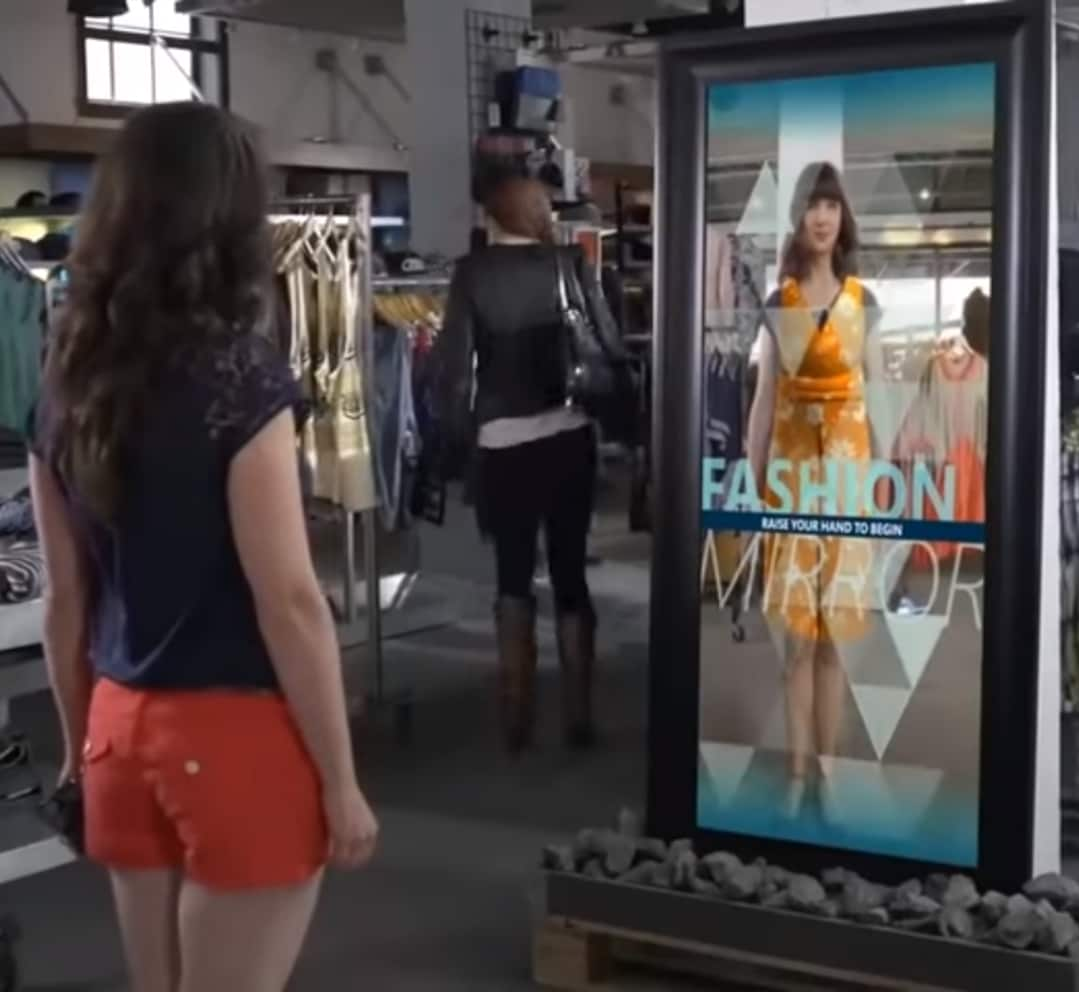
Avatar-Based Virtual Fitting Rooms:
Here, a 3D avatar based on the user's measurements is created. The clothes are then virtually fitted onto this avatar.
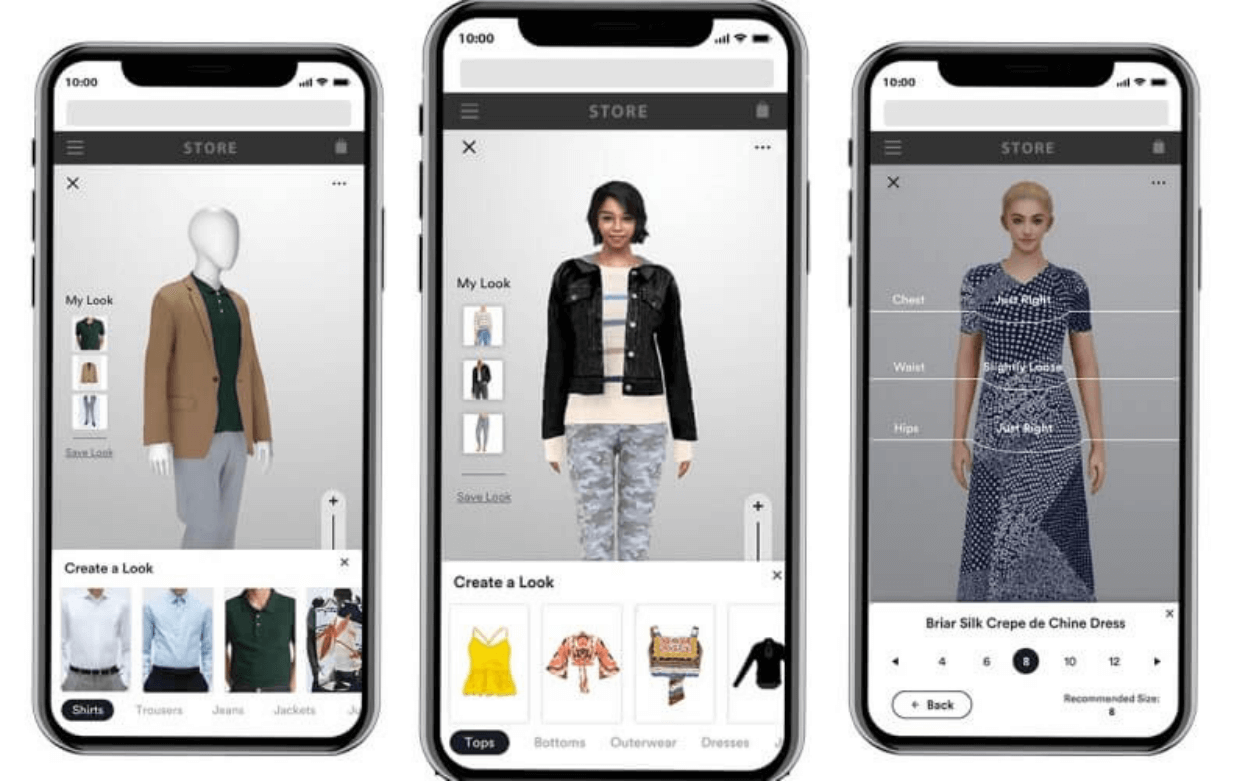
Social Shopping Virtual Fitting Rooms:
These are interactive versions of virtual fitting rooms. They allow users to share their virtual try-on experience with others for feedback.
2. AI-Powered Virtual Fitting Rooms:
These fitting rooms uses artificial intelligence. They offer a personalized shopping journey. Customer data is analyzed for this.
It includes previous purchases, viewed items, and browsing behavior.
Based on this data, the fitting rooms suggest items that the customer may prefer. AI also helps improve the fit accuracy. It predicts the fitting of a garment.
This prediction uses the customer's body measurements and the specifications of the clothes.
3. By Retailers' Application:
In-Store Virtual Fitting Rooms:
You'll find these in physical stores. They use interactive screens for a virtual try-on of different outfits.
Online Virtual Fitting Rooms:
These are part of a retailer's website or mobile app. They let customers try clothes virtually while shopping online.
Hybrid Virtual Fitting Rooms:
These fitting rooms offer a blend of in-store and online experiences. Customers can try items in-store and save their favorites to an online account.
4. By Dimensionality and Personalization:
2D Virtual Fitting Rooms:
These fitting rooms use two-dimensional images. The user and clothes are displayed in 2D for a basic virtual try-on.
3D Virtual Fitting Rooms:
These fitting rooms provide a three-dimensional try-on experience. They give a realistic and accurate view of how the clothes might fit.
Personalized Virtual Fitting Rooms:
These fitting rooms use AI and machine learning. They understand the user's style and preferences. Based on this understanding, they recommend personalized outfits.
The retailer decides the type of virtual fitting room to use. It depends on their target customer base, technology investment, and the kind of shopping experience they want to offer.
Now, let’s more towards how these rooms works.
Part 3. How Do Virtual Fitting Rooms Technology Work?
As discussed earlier, most virtual fitting rooms use augmented reality. For example, they use webcams to scan customers’ bodies and create a 360-degree 3D model. Others use artificial intelligence and use machine learning, and algorithms. Hence, they create fully-body 3D models of each customer.
While the rest use RFID or radio frequency identification and overlays a 3D model. Thus, the customer can see what items look like without trying them on.
The technology fuelling a virtual dressing room includes:
1. Augmented Reality:
Augmented reality adds digital info to the real world. It overlays virtual elements onto physical bodies or objects. This includes clothing, shoes, and digital makeup. Then the overlay is displayed on an LCD screen, reflecting images to customers.
2. Artificial Intelligence
Artificial Intelligence is fundamental for the success of a virtual fitting room. Its use is in everything from image recognition to machine learning.
Moreover, form-fitting algorithms are a type of Artificial intelligence. They create accurate models of customers’ bodies. Hence, they match the clothes to the person.
Through machine learning, these algorithms detect customers’ sizes. Thus, they distinguish colors and different fabrics.
3. 3D Body Scanning
Advanced virtual fitting rooms sometimes utilize 3D body scanning. This technology offers a detailed picture of the customer's body.
The process begins with infrared sensors or multi-camera setups. These tools capture the shape and size of the customer's body. They create a three-dimensional image.
This 3D image allows a more accurate fit of the virtual clothes. The result is a precise representation that enhances the user experience.
4. Cameras
Many virtual dressing rooms use special cameras. They build 3D models to measure depth and distance.
Kinect cameras, like in Xbox, can work with hand moves and voice commands. Phones can now handle depth, distance, and light and put items on images. This is mostly used for small items like shoes or makeup.
5. Light Detection and Ranging
It is a remote sensing method. It measures the depth and distance between objects using light reflected from lasers. This helps customers to check how clothes fit with great accuracy.
6. Cloud Computing and Data Analysis
Behind the scenes, these technologies often use cloud computing for data storage and processing. This helps manage large amounts of data generated from 3D modeling and AR processes. But also enables the application of advanced machine learning algorithms for data analysis.
For example, data collected over time can be analyzed to understand consumer behavior. These preferences help retailers to personalize recommendations and improve customer satisfaction.
Now, we have a basic understanding of a virtual fitting room. Let’s shed some light on why it is a great investment.
Part 4. Why Should You Invest in Virtual Fitting Rooms?
There are several benefits of investing in a virtual dressing room. Some of these are the following:
1. Access to Customer Data
Virtual fitting rooms gather customer information to analyze it. For example, many customers with similar body types use a virtual fitting room. The seller can ensure they have stock for that body size and type. Through surveys, they can also get customer views on the clothes they bought or didn't buy.
2. Bring In New Customers
The shopping trends have changed. Young customers are particularly more inclined to online shopping. Creating positive experiences brings in new customers and boosts sales.
3. Space Saving
40% of customers are willing to pay more for goods if they can try them through AR. Also, 71% say they'd shop more at a store if they used AR. Virtual mirrors and fitting rooms can save space as there's less need for real fitting rooms.
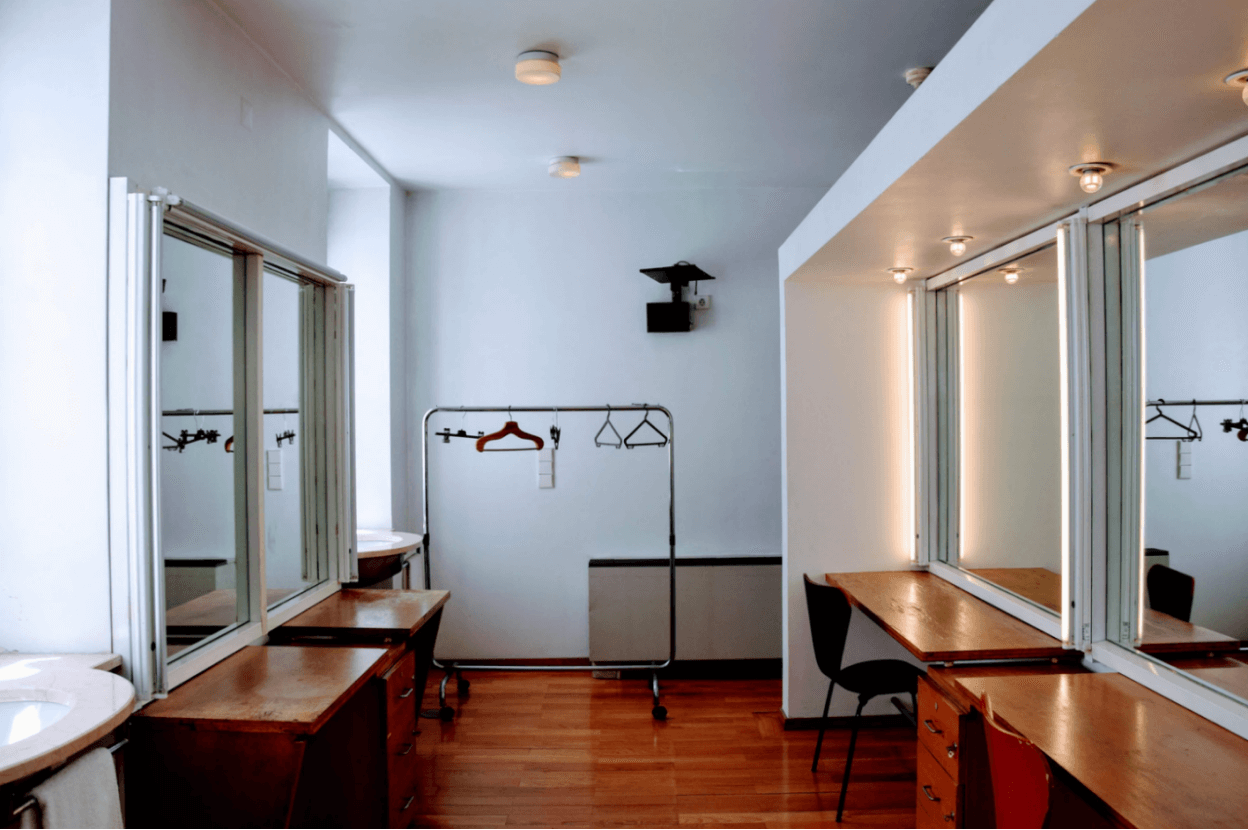
4. Convenience
A virtual fitting room offers a more convenient shopping experience. Customers don’t need to try on clothes physically. And swap it out immediately if it doesn’t fit. Even it is more convenient than buying an online item. You don’t need to send it back if it doesn't fit.
5. Improve Customer Experience
Trying on clothes without getting undressed solves problems for many customers. Many customers don't feel safe trying clothes in fitting rooms. So they can try on clothes virtually, which is more convenient and safe.
6. Cost-Effective
Virtual fitting rooms reduce the number of returns by allowing customers to try on items virtually. High return rates become a headache for retailers. However, this innovative technology keeps retailers safe from sizing issues. Thus, investing in a physical fitting room proves cost-effective.
These were the key benefits of investing in a virtual fitting room. Let’s have a look at its limitations.
Part 5. Limitations of a Virtual Fitting Room
A virtual dressing room has several limitations. Some of these are as follows:
Can’t Replicate Physical Experience
Virtual fitting rooms are unable to mimic the feel of garments. Buyers can’t touch or feel the fabric. All this leads to a risk that people won’t buy your product even after trying it.
Inaccurate Color Representation
Have you ever bought a product different from what you had seen? This is because the clothing color in a virtual fitting room may not be accurate. It happens due to varying screen settings. Thus, leading to mismatches between the actual and virtual product.
Limited Body Type Representation
Virtual dressing rooms often struggle to represent all body types accurately. It can lead to inaccurate fit predictions. So the customers will return your products even after trying and buying them.
Usability Challenges
Some customers may find this technology complicated to use.
Privacy Concerns
Virtual fitting rooms require some personal information, such as body measurements. Some customers can find it a privacy concern.
Let’s keep the momentum going and discuss examples of virtual fitting rooms.
Part 6. Virtual Fitting Room Examples:
Virtual fitting rooms have gained worldwide popularity. Let's explore some notable examples of renowned companies using this latest technology.
Knix
Knix is a lingerie and activewear brand. It also integrated virtual fitting rooms. Knix used body scanning technology. Customers can put in their sizes and try products virtually. Body scanning makes sure the fit is right. It also raises customer trust and cuts down returns.

Gucci
Gucci made AR shoes on Snapchat during the pandemic. This made a digital lens that put a virtual shoe on a shopper's foot. Customers could tap "shop now" on Snapchat to directly visit Gucci's product pages to buy.

Warby Parker
Warby Parker, a glasses seller, uses virtual fitting rooms online. Customers can try frames on virtually with their phones or PCs. They can see how glasses look on them. This tech helps pick the right one, making sure the fit is good and satisfaction is high.
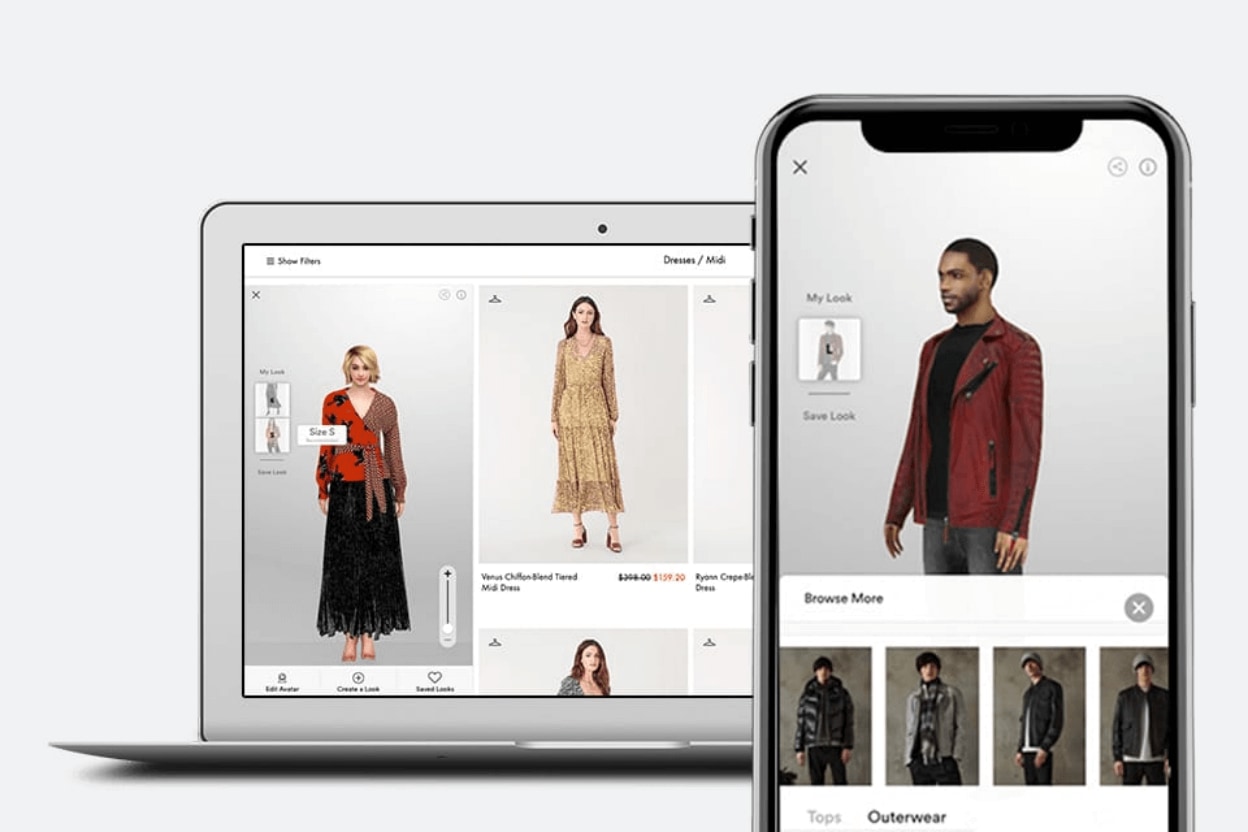
Adidas
A big sports brand, Adidas, has made a virtual fitting room app. This app gives customers a special shopping experience. With AR and computer vision, users can try on sneakers virtually. They can check the fit, style, and colors before buying. This feature raises interest, cuts down returns, and makes customers happier.
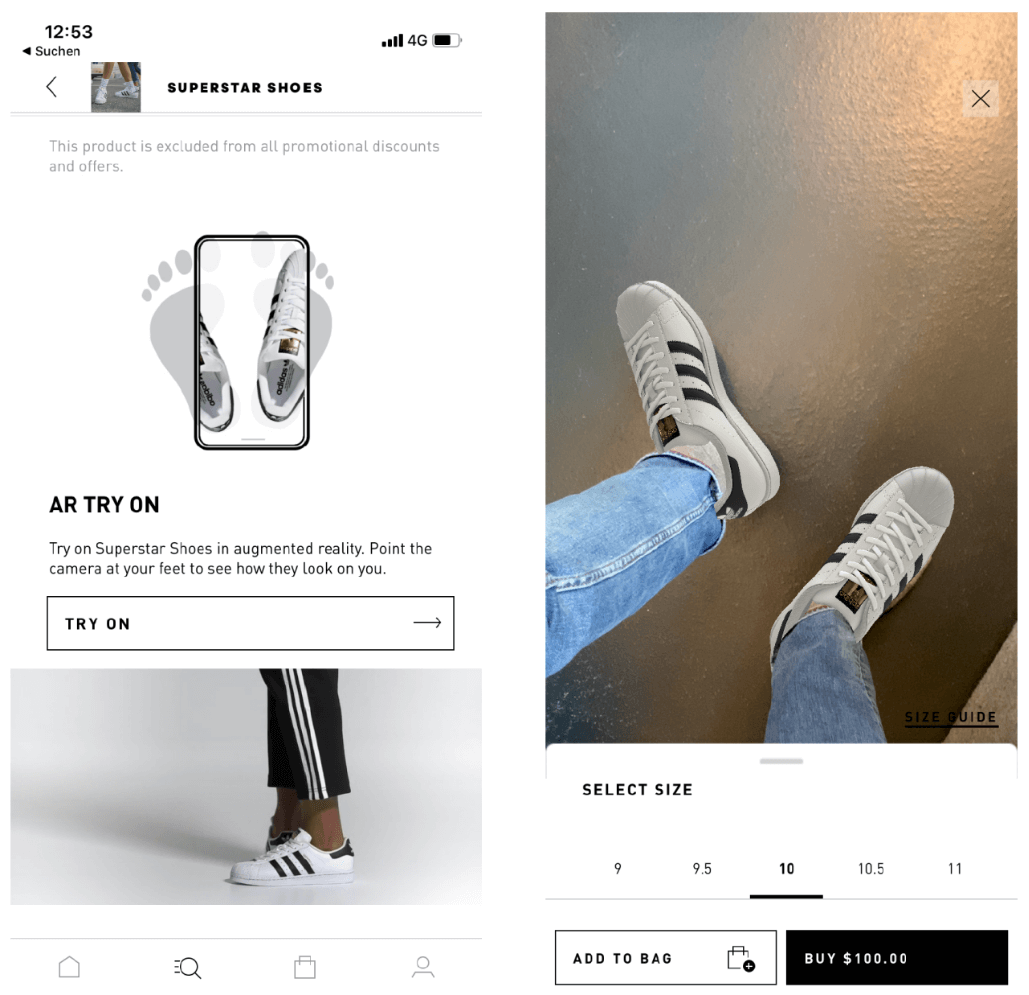
Conclusion
The idea of a virtual fitting room is reshaping shopping. It offers a unique, personalized, and safe experience. Brands like Knix, Gucci, Warby Parker, and Adidas are embracing this tech. Virtual dressing rooms help customers choose the right fit, style, and color.
This reduces the chances of returns and boosts satisfaction. Yet, they have some limits, like color misrepresentation and privacy issues.
Despite this, the future of shopping looks more virtual and exciting. As tech gets better, so will virtual fitting rooms. They're a smart investment for any forward-thinking retailer. It's truly dressing up for the digital age!
